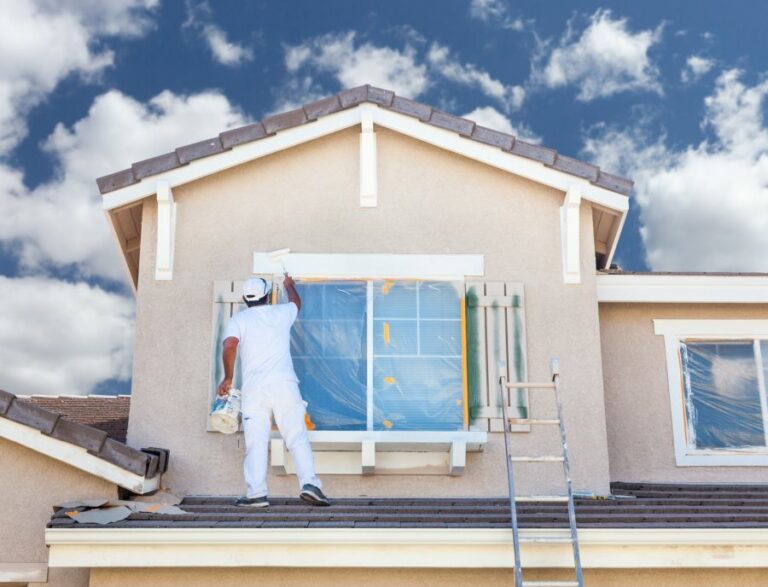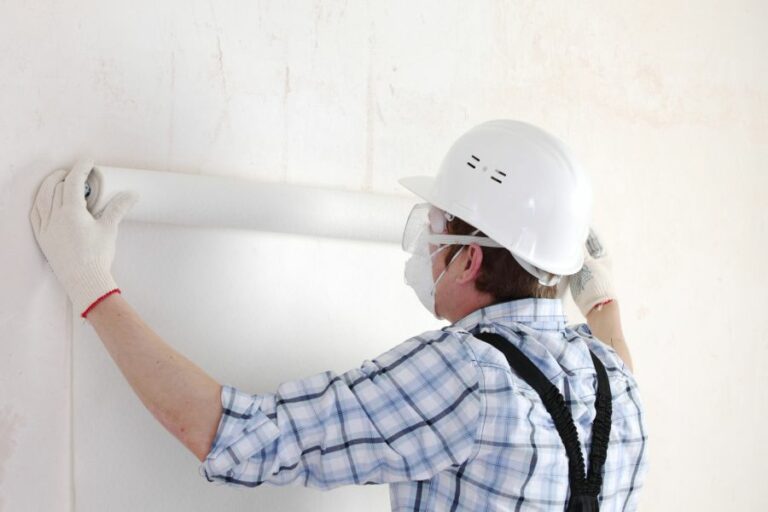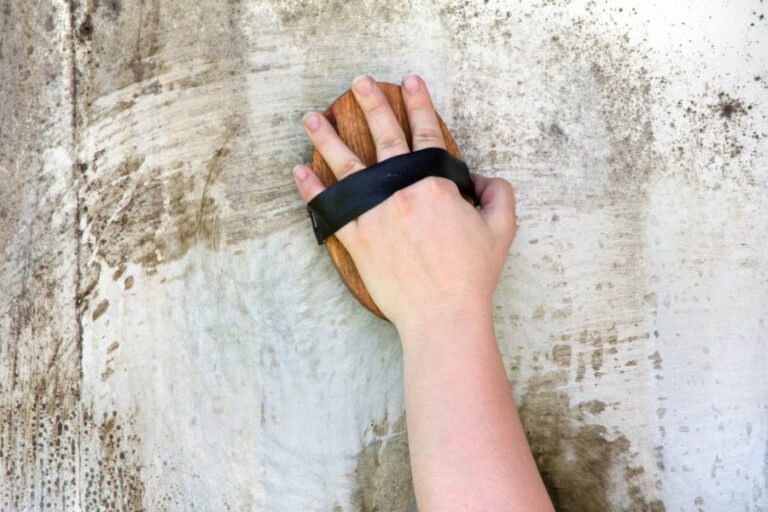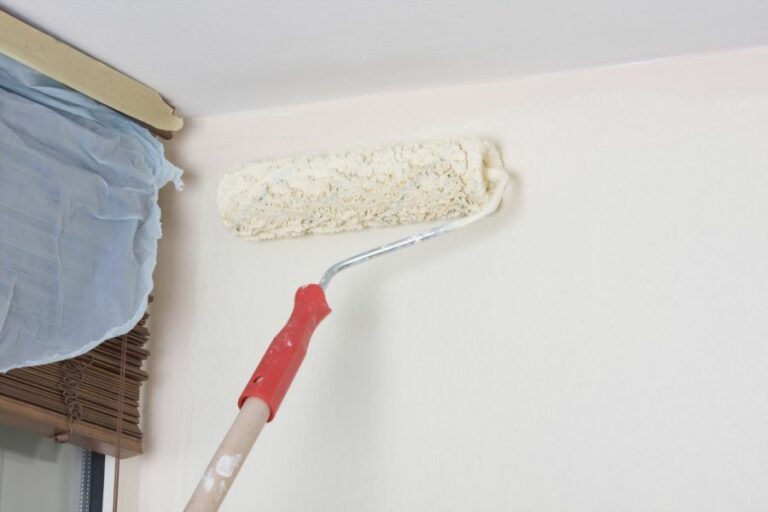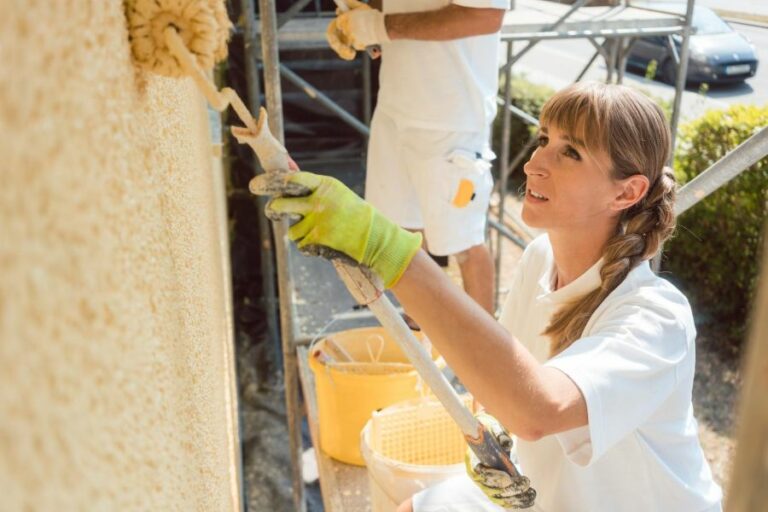Best Primer For Various Surfaces: Selection And Application
Choosing the right primer for various surfaces can be a bit of a challenge, but worry not, as we have all the necessary knowledge and experience to help you make a perfect choice. Whether you’re working on walls, wood, or metal, selecting the proper primer is key to achieving a high-quality finish that will last.
The best primer for various surfaces: selection & application:
To select the best primer for various surfaces, consider the surface material, special requirements, paint compatibility, and location (indoor/outdoor). Apply the primer after surface preparation, following safety measures and adhering to the manufacturer’s guidelines. The three main primer types are oil-based (ideal for wood, metal, and stained surfaces), latex (best for drywall, softwoods, and previously painted surfaces), and shellac (suitable for severe stains, glossy surfaces, and wood prone to bleeding).

Discover the perfect primer for any surface! Our guide covers a wide range of materials, helping you select the ideal primer and master its application for optimal results. Don’t let surface challenges hold you back. Read on to elevate your painting projects.
Contents
- 1 Optimal Primers for Different Surfaces: Choosing & Applying
- 2 Ideal Primer Selection for Various Surface Types
- 3 Exploring Multi-Surface Primer Benefits and Uses
- 4 Universal Primer Compatibility: Can It Work on All Surfaces?
- 5 Primer Adhesion: Will It Bond to Every Surface?
Optimal Primers for Different Surfaces: Choosing & Applying
When it comes to painting any surface, one aspect that can ensure a successful and long-lasting result is the use of the right primer. Primers are essential in providing a stable base and ensuring proper adhesion for the topcoat.
• Understanding Primers and Their Importance
Primers serve as an intermediate layer between the surface and the topcoat. They provide multiple benefits, such as:
- Improving Adhesion: Primers ensure that paint sticks properly to the surface, reducing the risk of peeling and flaking.
- Sealing Porous Surfaces: Surfaces like wood, concrete, and drywall tend to absorb paint. Primers seal these surfaces and prevent the topcoat from soaking in, resulting in even coverage.
- Blocking Stains: Primers help prevent stubborn stains and marks from bleeding through the finished paint.
- Enhancing Paint Durability: A well-prepared surface with the right primer ensures a long-lasting paint job.
Now that we understand the importance of primers, let’s explore the various types and what surfaces they’re best suited for.
• Types of Primers and Their Suitable Surfaces
– Oil-Based Primers
Oil-based primers offer excellent adhesion and stain-blocking properties. They work well on both interior and exterior surfaces, including:
- Bare wood, especially for exterior
- Metal surfaces prone to rust
- Stained or smoke-damaged surfaces
However, oil-based primers have longer drying times and emit strong odors. They may also require mineral spirits for cleanup, which can be inconvenient for some users.
I recommend using KILZ Original Multi-Surface Stain Blocking Interior Oil-Based Primer for its excellent stain-blocking and adhesion properties.
– Latex Primers
Latex or water-based primers are environmentally friendly, easy to clean up with water, and have low odor. They’re ideal for:
- Drywall and plaster
- Unfinished softwoods, such as pine or cedar
- Previously painted surfaces
Latex primers have a quicker drying time, allowing you to apply the topcoat sooner. My personal recommendation for an all-purpose latex primer is Benjamin Moore’s Fresh Start Primer.
– Shellac Primers
Shellac-based primers are fast-drying and offer exceptional adhesion and stain-blocking performance. They’re suitable for:
- Interior surfaces with severe stains or odors
- Glossy or hard-to-stick surfaces, like ceramic tiles or plastics
- Wood surfaces prone to bleeding, such as redwood or cedar
While they have high VOC (volatile organic compound) content, they provide unbeatable stain-blocking properties. I recommend Zinsser B-I-N Shellac-Based Primer for its excellent performance on challenging surfaces and stains.
• Tips for Selecting the Right Primer
- Determine the Surface Material: Establish whether you’re working with wood, metal, concrete, or drywall, and select a primer designed for that specific surface.
- Identify Special Requirements: If your surface has stains, peeling paint, or significant porousness, choose a primer with enhanced stain-blocking or sealing abilities.
- Consider Paint Compatibility: Ensure the primer you select is compatible with the topcoat to prevent issues with adhesion and finish quality.
- Indoor or Outdoor: Make sure to choose a primer formulated for interior or exterior use, depending on your project’s location.
• Proper Application of Primers
Follow these steps to ensure the best results when applying primer:
- Surface Preparation: Clean the surface of dirt, dust, and debris, and repair any cracks or holes with filler. Sand the surface if necessary and wipe clean once more.
- Safety Measures: Ensure proper ventilation and wear protective gear, such as gloves and safety goggles, especially when working with oil or shellac-based primers.
- Mix the Primer: Stir the primer thoroughly before application to ensure an even distribution of components.
- Apply the Primer: Using a brush, roller, or sprayer, apply an even coat of the primer to the surface, following the manufacturer’s guidelines for coverage, drying time, and recoating.
- Inspect and Touch-Up: Once the primer is dry, inspect the surface for any uneven coverage, stains, or visible imperfections. Address these areas with an additional coat of primer if necessary.
After the primer has correctly dried and you are satisfied with the coverage, it’s time to apply the topcoat for a flawless and durable finish.
In conclusion, choosing the best primer for your specific surface and applying it correctly can make all the difference in achieving a professional and long-lasting paint job.
Surface | Best Primer | Application Tips |
|---|---|---|
Wood | Oil-based primer | Sand the surface lightly, remove dust, apply primer with a brush or roller, and allow to dry before painting. |
Metal | Rust-inhibiting primer | Remove any rust with a wire brush, clean the surface, apply primer using a brush or spray can, and allow it to dry before painting. |
Plaster | PVA primer | Ensure the surface is clean and free of dust, apply the primer with a brush or roller, and allow it to dry before applying paint. |
Concrete | Masonry primer | Remove any debris and clean the surface. Apply primer with a brush or roller, and let it dry before applying paint. |
Drywall | Drywall primer | Clean the surface, apply primer using a brush or roller, ensure even coverage, and allow to dry before painting. |
Plastic | Plastic primer | Clean the surface with soap and water, lightly sand if needed, apply primer using a brush or spray can, and let it dry before painting. |
Ideal Primer Selection for Various Surface Types
Selecting the appropriate primer for a specific surface is critical to achieving a durable and long-lasting paint job. Primers pre-condition surfaces and provides a secure bond for the paint, ensuring that it adheres better and doesn’t peel.
• Water-Based Primers
Also known as acrylic primers, water-based primers are versatile, non-toxic, and easy to clean up after use. They have low levels of volatile organic compounds (VOCs), which means they produce fewer harmful emissions, making them an environmentally-friendly option.
– Best for Drywall, Plaster, and Brick Surfaces
Water-based primers are suitable for use on porous surfaces like drywall, plaster, and brick or stone. They offer excellent adhesion, allowing the paint to stick effectively, and are less likely to react with porous materials.
I recommend: Using a water-based primer on new or previously painted drywall, as well as surfaces with plaster, brick, or stone.
• Oil-Based Primers
Oil-based primers, also known as alkyd primers, are highly adhesive, offering a strong bond to surfaces, making them a popular choice for professionals.
They are, however, more challenging to clean up after use and emit more VOCs, meaning they may not be the best choice for those looking for a more eco-friendly option.
– Best for Wood, Metal, and Stained Surfaces
Oil-based primers are ideal for surfaces that need a high level of protection, such as wood or metal. They handle the tannins in the wood quite well, preventing bleed-through and ensuring a smoother finished paint job. For metal surfaces, oil-based primers provide excellent rust prevention.
I recommend: Utilizing an oil-based primer for wooden surfaces prone to tannin bleeding, like cedar or redwood, and for metal surfaces to provide rust prevention.
• Shellac Primers
Shellac primers provide excellent stain blocking and have been used for centuries due to their durability and fast-drying properties. They are, however, higher in VOCs and may be more difficult to clean up.
– Best for Sealing Stains, Water, and Smoke Damaged Surfaces
Shellac primers excel at sealing in stains, making them perfect for surfaces that have been damaged by water or smoke. They provide an excellent barrier to prevent these stains from bleeding through to the paint layer.
I recommend: Using a shellac primer for surfaces with severe staining or damage. The Environmental Protection Agency (EPA) also suggests using shellac as a primer in mold remediation projects to seal in any remaining mold spores.
• Self-Priming Paints
Self-priming paints combine a primer and paint in a single product. They are convenient and save time, but they may not offer the same level of protection as using a separate primer and paint.
– Best for Lightly Stained, Previously Painted Surfaces
Self-priming paints are a suitable option for surfaces that have only light stains or have been previously painted. They may not provide the same level of protection or adhesion as a separate primer, so it’s essential to evaluate the surface’s condition before deciding to use self-priming paint.
I recommend: Opting for self-priming paint if the surface has light stains or has been previously painted, but always consider the condition of the surface and its requirements.
• Conclusion
Choosing the right primer is essential for achieving the best possible outcome with a paint job. Water-based primers are suitable for porous surfaces like drywall, plaster, and brick.
Oil-based primers are ideal for wood and metal surfaces, while shellac primers excel at sealing in stains for water and smoke-damaged surfaces.
Finally, self-priming paints offer convenience for lightly stained or previously painted surfaces. Always consider the type of surface and the desired outcome before selecting the best primer for your project.
Surface Type | Recommended Primer |
|---|---|
Wood | Oil-based or Latex Primer |
Metal | Rust-resistant Primer |
Concrete/Masonry | Concrete or Masonry Primer |
Drywall | PVA Primer |
Plaster | Oil-based or Latex Primer |
Plastic | Plastic Primer |
Exploring Multi-Surface Primer Benefits and Uses
A multi-surface primer is a versatile and essential product used in various painting and decorating tasks. It ensures better adhesion, coverage, and lasting performance of various topcoats, such as paints and varnishes, on a wide range of surfaces.
• Purpose of Multi-Surface Primers
Primers serve as a preparatory layer that helps the topcoat better adhere to a particular surface. However, not all primers are suitable for every surface type.
Multi-surface primers, on the other hand, are specifically formulated to work on an array of materials, including wood, metal, plastic, glass, and masonry.
In addition, multi-surface primers offer multiple benefits, such as:
- Better adhesion of the topcoat
- Enhanced coverage and color performance
- Improvement of the topcoat durability and resistance
- Smooth, professional finish
- Prevention of stains, discoloration, and rust
These factors make multi-surface primers a versatile solution for numerous painting and decorating projects.
• Types of Multi-Surface Primers
There are two main types of multi-surface primers: water-based and solvent-based.
– Water-Based Primers
As the name suggests, water-based primers use water as their primary solvent. Being low in volatile organic compounds (VOCs), they are more environmentally friendly and exhibit fast drying times.
Some of the popular water-based multi-surface primers include acrylic and latex-based formulations.
I recommend using water-based primers for most interior and exterior projects. They are suitable for surfaces like drywall, unpainted wood, and masonry. However, they may not be the best choice for surfaces with heavy stains or tannin extraction.
– Solvent-Based Primers
Solvent-based primers contain organic solvents, which emit higher levels of VOCs. These primers provide better adhesion, stain-blocking, and rust prevention, making them more suitable for surfaces like plastic, metal, or heavily stained wood.
Keep in mind that solvent-based primers require proper ventilation and adequate drying time. I recommend using them primarily for challenging surfaces and exterior applications.
• Applying Multi-Surface Primer
Before applying a multi-surface primer, preparation of the surface is crucial. Follow these steps to ensure the best results:
- Clean the surface: Remove dust, dirt, grease, and any loose paint or rust with a cleaning solution or sandpaper.
- Repair damage: Fill any holes, cracks, or dents with an appropriate filler or caulk, and sand the area smooth once dry.
- Degloss the surface: Lightly sand glossy surfaces to create a better bond between the primer and topcoat.
- Protect surrounding areas: Use tape and drop cloths to shield adjacent surfaces from primer and paint.
After preparing the surface, apply the primer as per the manufacturer’s instructions. Usually, one coat is sufficient for most surfaces, but you may need additional coats for highly porous or stained surfaces. Allow the primer to dry fully before applying the topcoat.
The drying time can vary depending on the primer type and environmental conditions, so always check the manufacturer’s recommendations.
• Selecting the Right Multi-Surface Primer
With the abundance of multi-surface primers available in the market, choosing the right one for your project can be challenging. Consider the following factors to make the best decision:
- Surface type: Evaluate the surface you want to prime and match it with the primer’s specifications.
- Indoor or outdoor: Select a primer specifically formulated for either interior or exterior use, considering factors like humidity, temperature, and UV resistance.
- Topcoat compatibility: Confirm that the primer is designed to work with the intended topcoat, such as oil-based or water-based paints.
- Environmental impact: Opt for low-VOC primers, especially for indoor projects and environmentally sensitive areas.
Now that you understand the function, types, application, and selection criteria for multi-surface primers, you can make a well-informed decision for your next painting or decorating project.
Using a quality primer will enable you to achieve a smooth, long-lasting, and professional-looking finish on various surfaces.
Universal Primer Compatibility: Can It Work on All Surfaces?
Primers play a crucial role in ensuring a smooth, durable, and long-lasting paint job. They set the stage for the proper adhesion of paints and provide an excellent base for various surfaces.
But can primer be applied to any surface? Before we delve into that, let’s first understand the role of primers in painting projects.
• Why Primers Matter
Primers create an excellent base for paint adhesion by:
- Sealing porous surfaces to keep finishes from soaking in too much.
- Providing a barrier to reduce stains or other imperfections seeping through the paint.
- Increasing adhesion, minimizing paint peeling or chipping.
- Enhancing the paint’s color vibrancy and durability.
With these benefits in mind, it’s essential to select the right primer for the surface you’re working on. So, let’s explore the versatility of primers on different surfaces.
• Types of Primers for Different Surfaces
– Wood Surfaces
For wooden surfaces, it is advisable to use a wood primer. Wood primers help prevent knots from bleeding through the paint, allow for minimal paint absorption, and ensure even coverage.
I recommend using an oil-based primer for exterior wood surfaces due to its excellent adhesion properties and resistance to weather conditions. For interior wood surfaces, you can use either a water-based or oil-based primer.
– Bare Metal
When painting bare metal, a metal primer helps prevent rust, enhances paint adhesion, and reduces the risk of peeling or chipping paint.
For ferrous metals (containing iron, which can rust), a rust-inhibitive primer is essential. Non-ferrous metals (such as aluminum, copper, or brass) should be primed with an appropriate metal primer to ensure a good bond.
– Concrete and Masonry Surfaces
Concrete and masonry surfaces are porous and require a specific masonry primer to seal the surface and provide a dependable base for paint.
This type of primer also helps prevent alkali burn on new masonry surfaces and keeps efflorescence (a white, powdery substance) from affecting the paint.
– Drywall
For new or repaired drywall, it’s essential to use a drywall primer. It seals the surface and provides a flawless, even base for paint application. A water-based (latex) primer is the right choice for drywall surfaces, as it dries quickly, has low fumes, and is easy to clean up.
– Previously Painted Surfaces
If you’re repainting a previously painted surface in good condition, you might not need a separate primer. However, if there are stains or other imperfections that need to be addressed, a stain-blocking primer can help secure an even finish.
Also, when switching from oil-based paint to latex paint or applying light-colored paint over a darker shade, a multi-purpose primer is recommended.
– Plaster Surfaces
Plaster surfaces require a specific plaster primer. Look for formulations designed for this porous surface to ensure proper bonding of the paint. Oil-based primers are suitable for priming plaster because they seal the surface more effectively than water-based primers.
• Specialty Primers for Specific Applications
Certain circumstances call for the use of specialized primers, such as:
- Shellac-based primer: For sealing in odors (e.g., smoke) or blocking severe stains (e.g., water, nicotine, or graffiti), a shellac-based primer provides the best barrier. It dries quickly and has excellent adhesion and stain-blocking properties, but it does carry a strong odor.
- Adhesion primer: In cases where the surface is shiny, slick, or difficult to bond, an adhesion primer is needed. These primers are designed to stick to glossy surfaces like glass, tile, or glossy paint without the need for sanding.
- Mold-resistant primer: For areas prone to mold or mildew, using a mold-resistant primer is essential. These primers contain anti-microbial agents that discourage mold and mildew growth, providing a lasting and healthy paint job.
• The Bottom Line
In conclusion, while there is no one-size-fits-all primer suitable for every surface, utilizing the proper primer for each surface ensures optimal paint adhesion, durability, and a pleasing finish.
By selecting the right primer based on the surface material and specific requirements, your paint job will be much more successful.
Primer Adhesion: Will It Bond to Every Surface?
An essential step in any painting project is the application of primer to the surface that will be painted. Properly applied, primer creates a bonding surface for paint, helping it adhere better and last longer.
A frequently asked question by amateur and professional painters alike is, “Will primer bond to any surface?” Let’s explore the factors that affect the bonding ability of primers, the various types of primers available, and practical tips for applying primers for optimal results.
• Factors Affecting Primer Bonding
There are numerous factors that can affect the ability of a primer to bond to a surface. Some of the key factors include:
– Surface Material
Different materials have distinct characteristics and may require specific primers to bond properly. For instance, wood, metal, and concrete all have different textures and properties that necessitate the use of different primers.
– Surface Condition
The current state of the surface also plays a significant role in primer bonding. Surfaces that are dirty, oily, glossy, or uneven will have a harder time bonding with primer. Cleaning and preparing the surface is crucial for successful primer application.
– Primer Type
A wide variety of primers are available, each with its specific bonding abilities and recommended applications. Choosing the correct primer for your surface can significantly affect the success of your project.
• Types of Primers
When it comes to primers, there are several types, each formulated to address specific surface conditions and materials.
– Oil-Based Primer
Oil-based primers are suitable for various surfaces, including wood, metal, and masonry. They excel at sealing porous surfaces, preventing bleed-through of stains, and adhering to glossier surfaces. However, they can have strong odors and take longer to dry compared to water-based primers.
– Water-Based Primer
Also known as latex or acrylic primers, water-based primers are ideal for most interior surfaces, such as drywall, plaster, and wood. They dry quickly, have a low odor, and are easier to clean up. However, they may not perform well on metals that are susceptible to rust or surfaces with heavy stains.
– Shellac Primer
Shellac primers provide excellent adhesion and stain-blocking ability, making them an ideal choice for surfaces with severe staining or odors.
They dry quickly and can be used on various surfaces like wood, plaster, and metal. However, they can be more difficult to work with owing to their strong odor and fast drying time.
– Self-Etching Primer
Self-etching primers are designed specifically for use on bare metals, providing a secure bond and preventing rust. They create a chemical bond with the metal surface, making them ideal for automotive and machinery applications. However, they should not be used on non-metallic surfaces.
• Tips for Applying Primer for Better Bonding
To achieve optimal primer bonding, follow these practical tips:
– Surface Preparation
Preparing the surface is crucial for primer adhesion. Clean the surface thoroughly to remove dust, oils, and contaminants. Sand glossy surfaces to create a better bonding surface. Fill any holes or cracks with the appropriate filler or spackle, and sand when dry for a smooth finish.
– Choosing the Right Primer
Select the appropriate primer for the surface material and its condition. Consult the manufacturer’s guidelines for the recommended application and ensure the primer is suitable for the intended paint finish.
– Application Technique
Apply the primer evenly, using the correct tools like brushes, rollers, or sprayers, depending on the surface and project size. Follow the manufacturer’s recommendations for application, including the required coverage, drying time, and re-coating.
– Temperature and Humidity
Environmental factors like temperature and humidity can affect primer bonding. Ensure the surface and air temperature are within the primer manufacturer’s recommended range, and avoid applying primer in excessively humid conditions.
– Primer Storage and Shelf Life
Ensure your primer is stored correctly and within its shelf life. Using expired or improperly stored primer can lead to poor bonding.
• Conclusion
To answer the question, “Will primer bond to any surface?” – it depends on several factors, including the surface material, condition, and the type of primer used.
By following proper surface preparation techniques, selecting the appropriate primer, and applying it correctly, primers can bond effectively to a wide range of surfaces.
For more information on primer selection and application, consult resources from reputable sources, such as professional painters’ associations or educational institutions like Purdue University.


